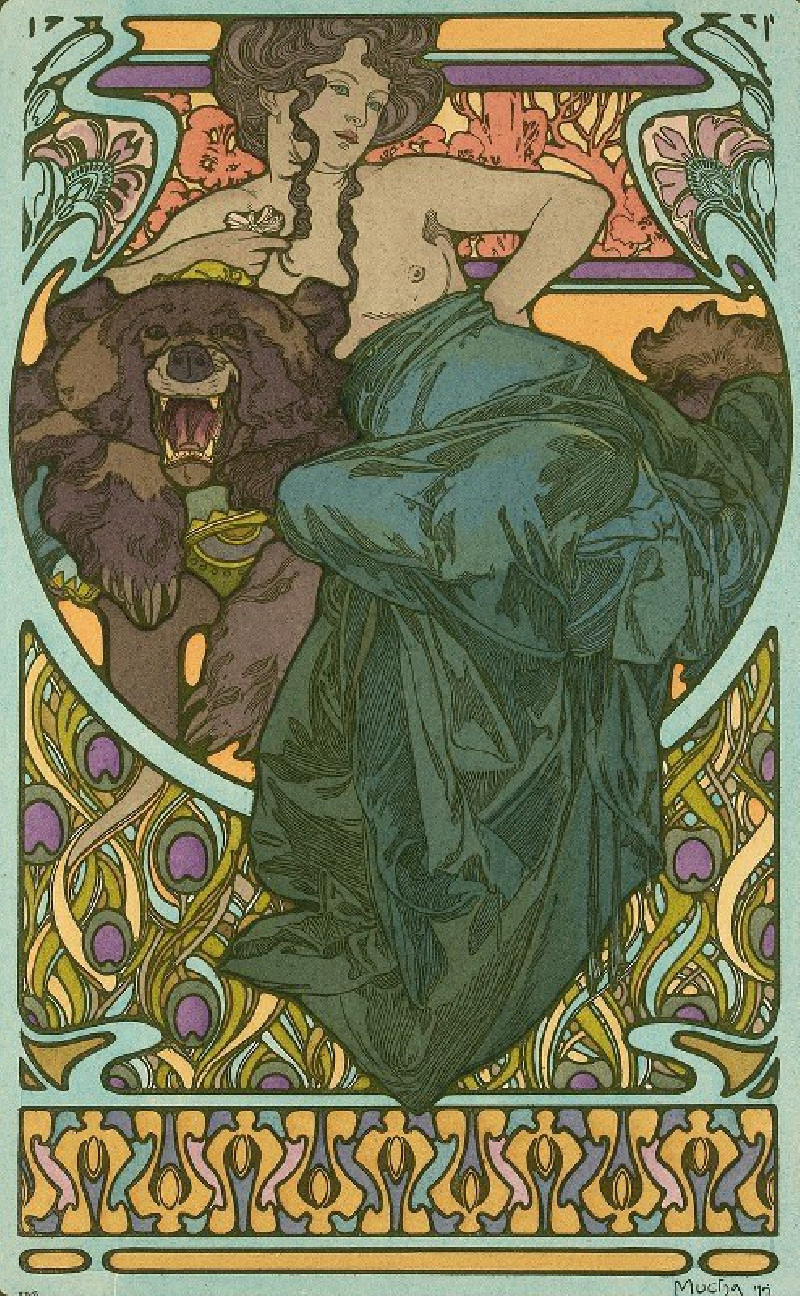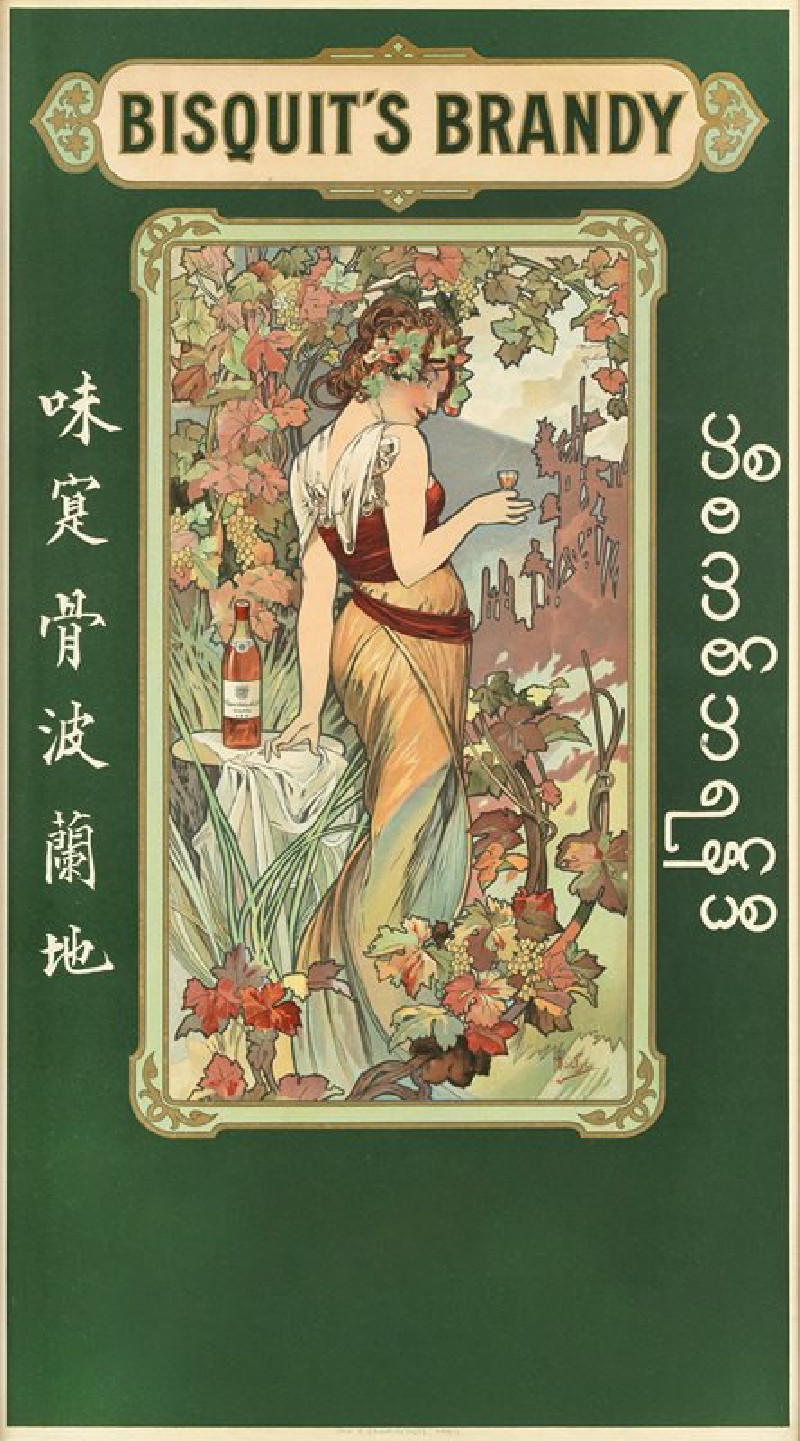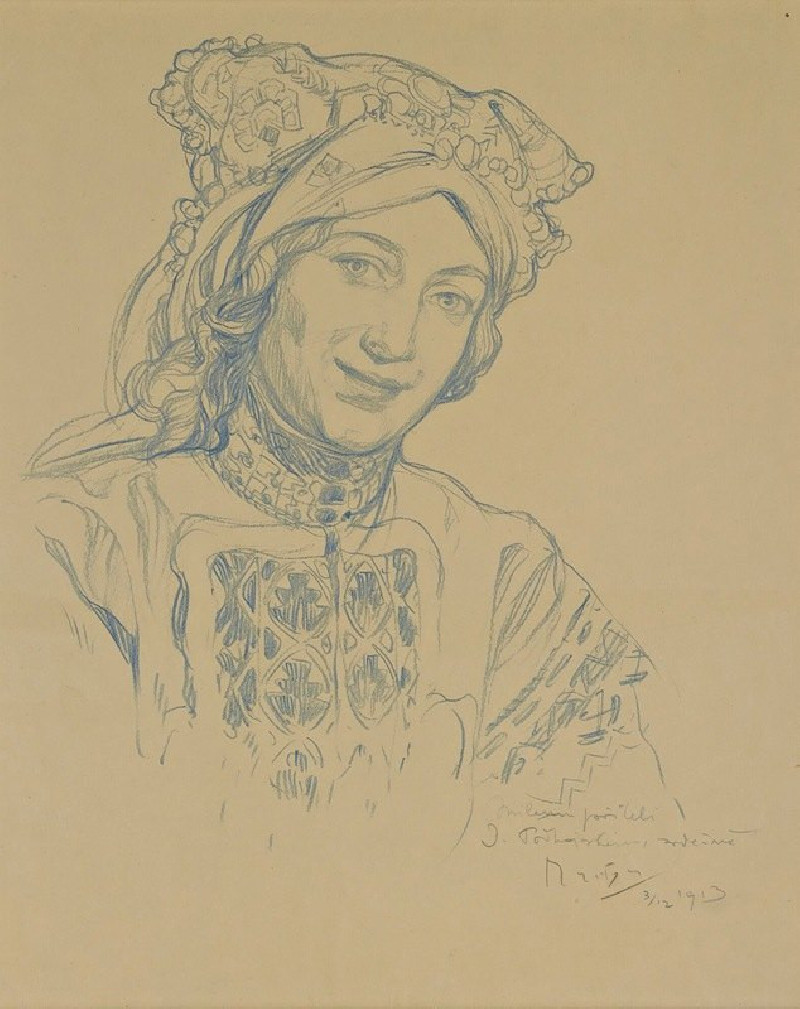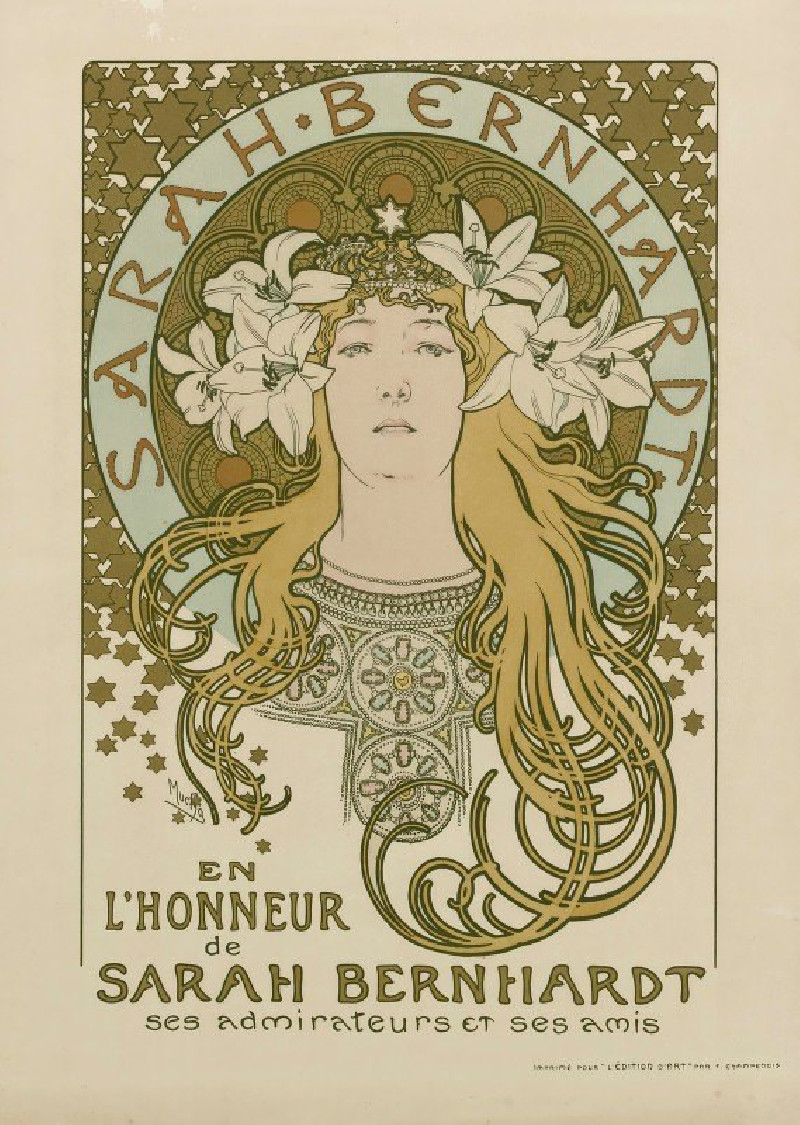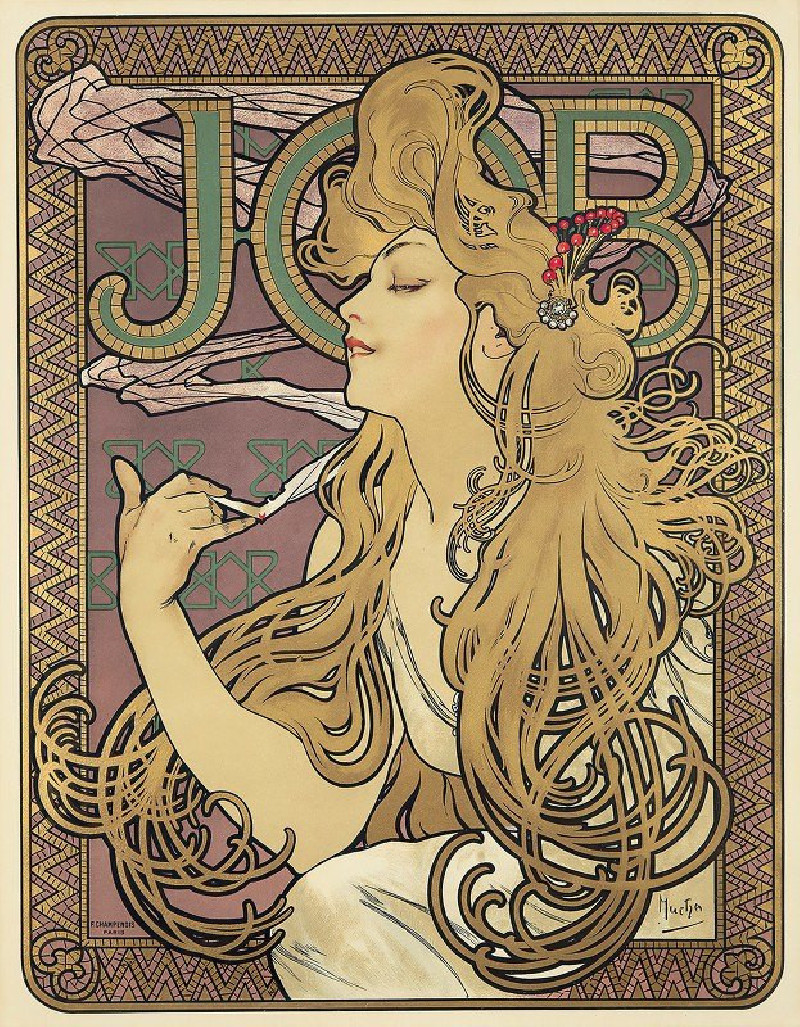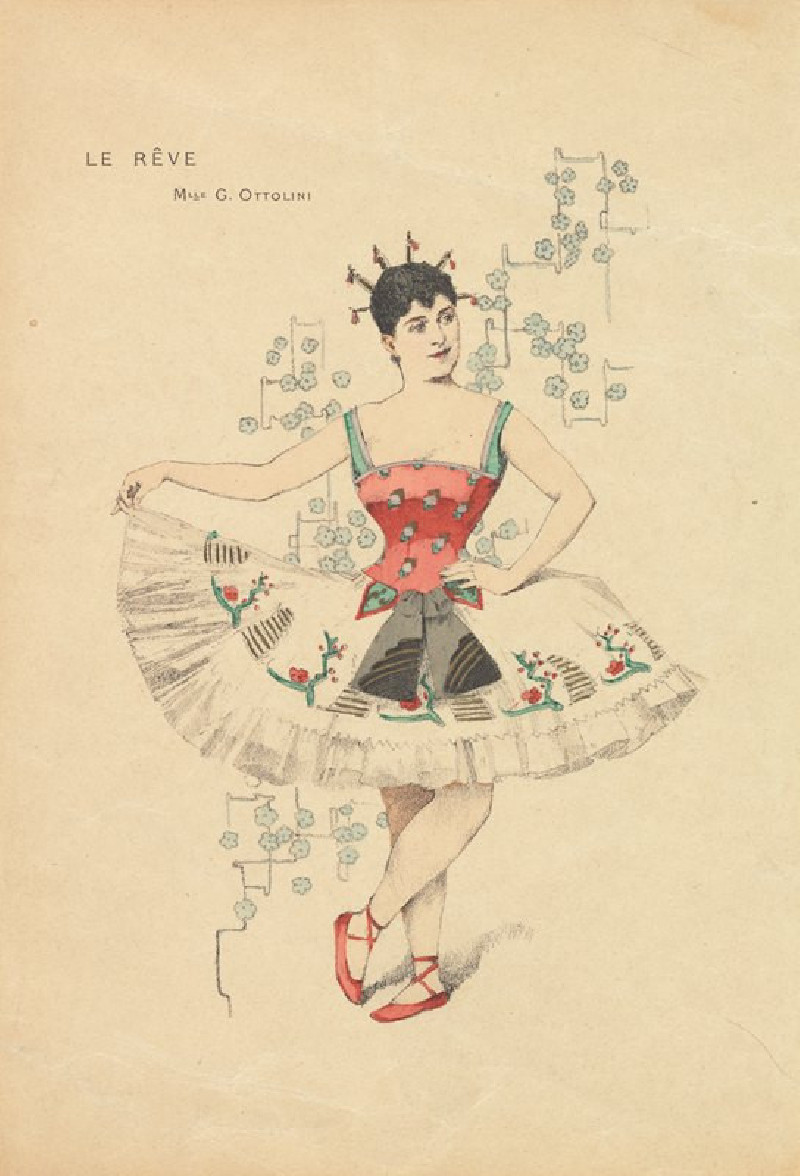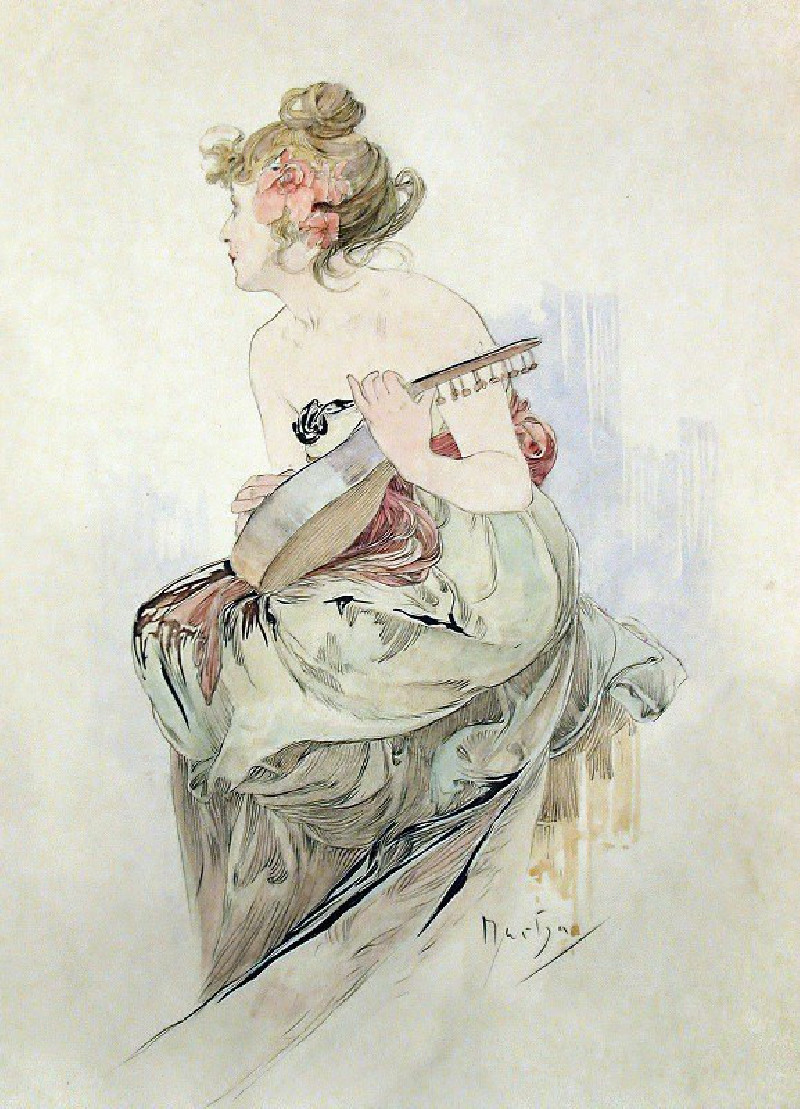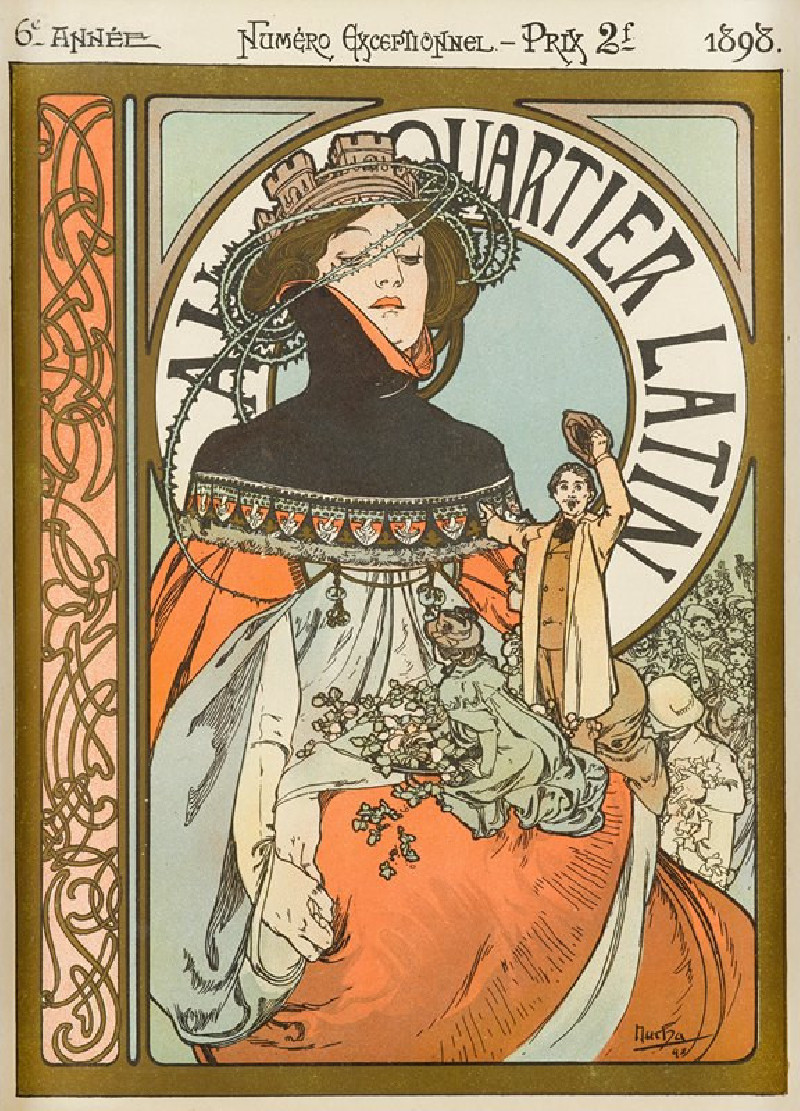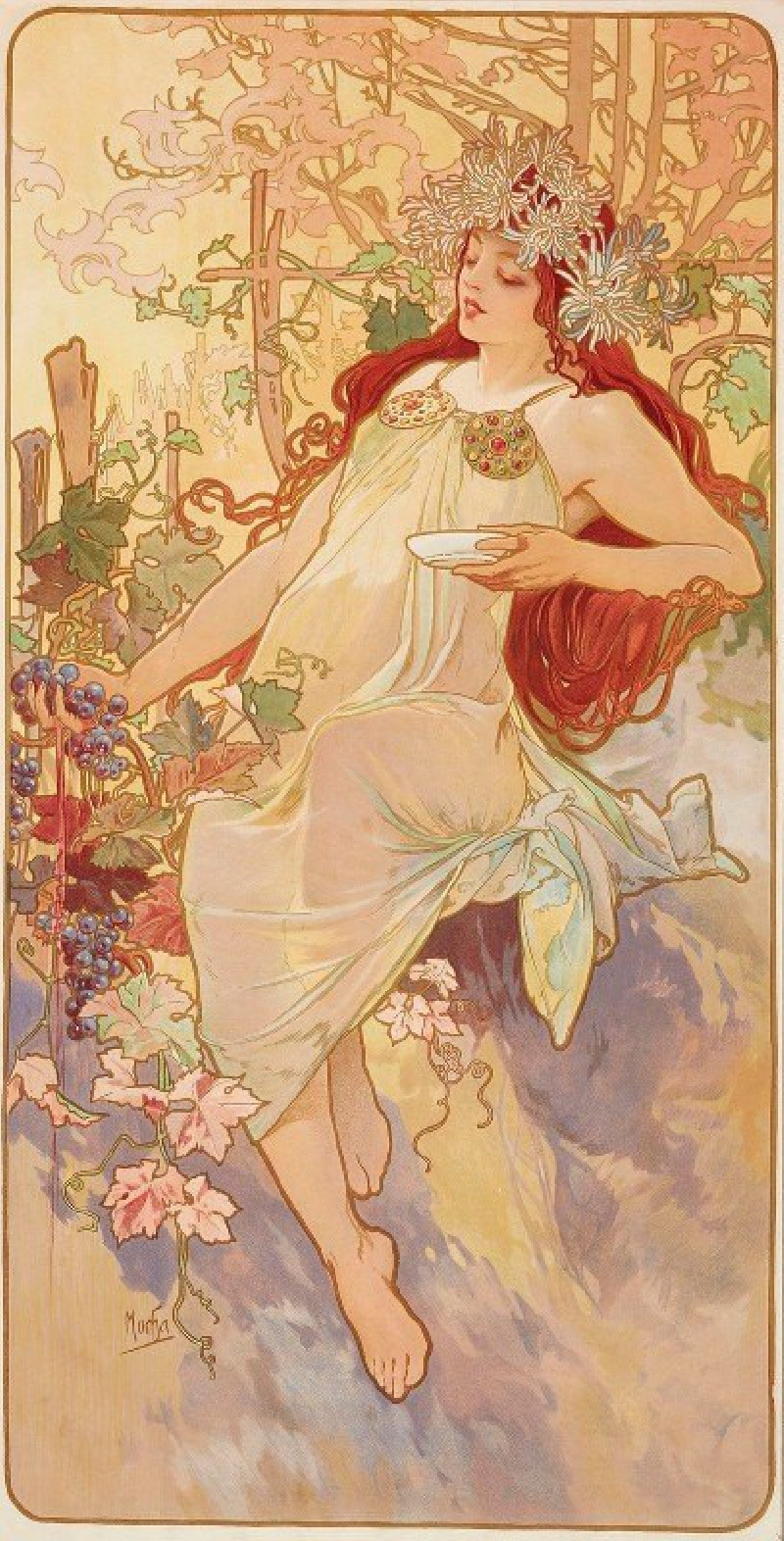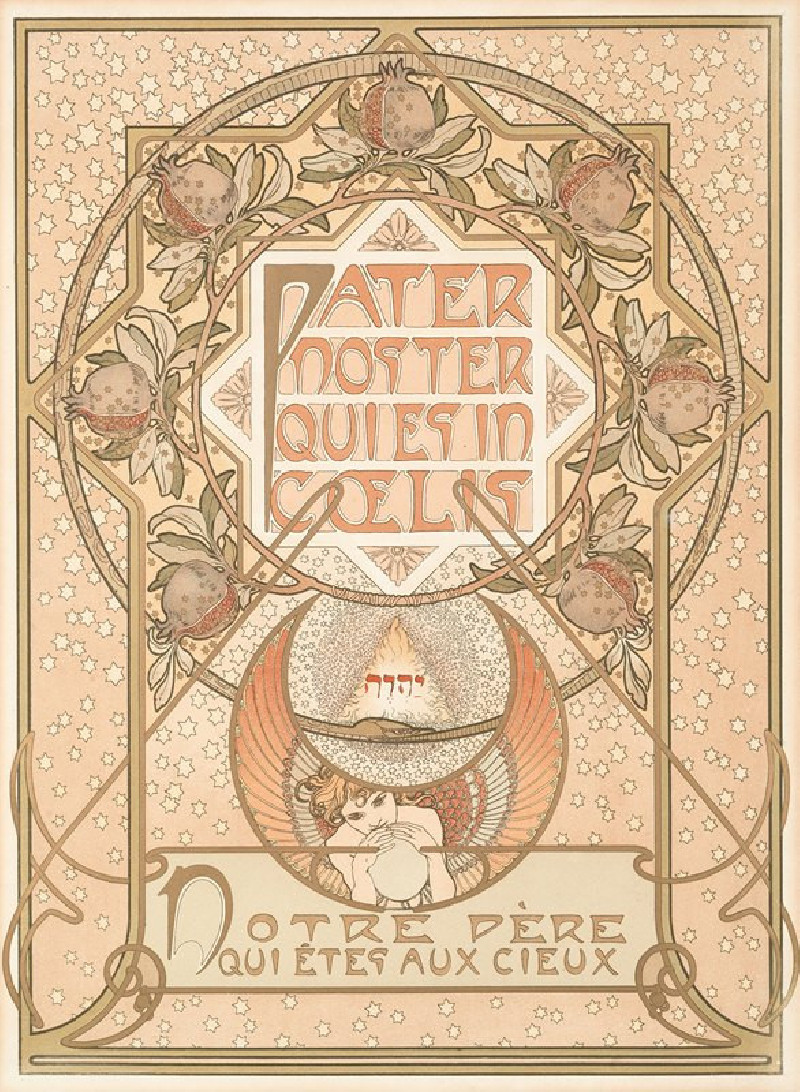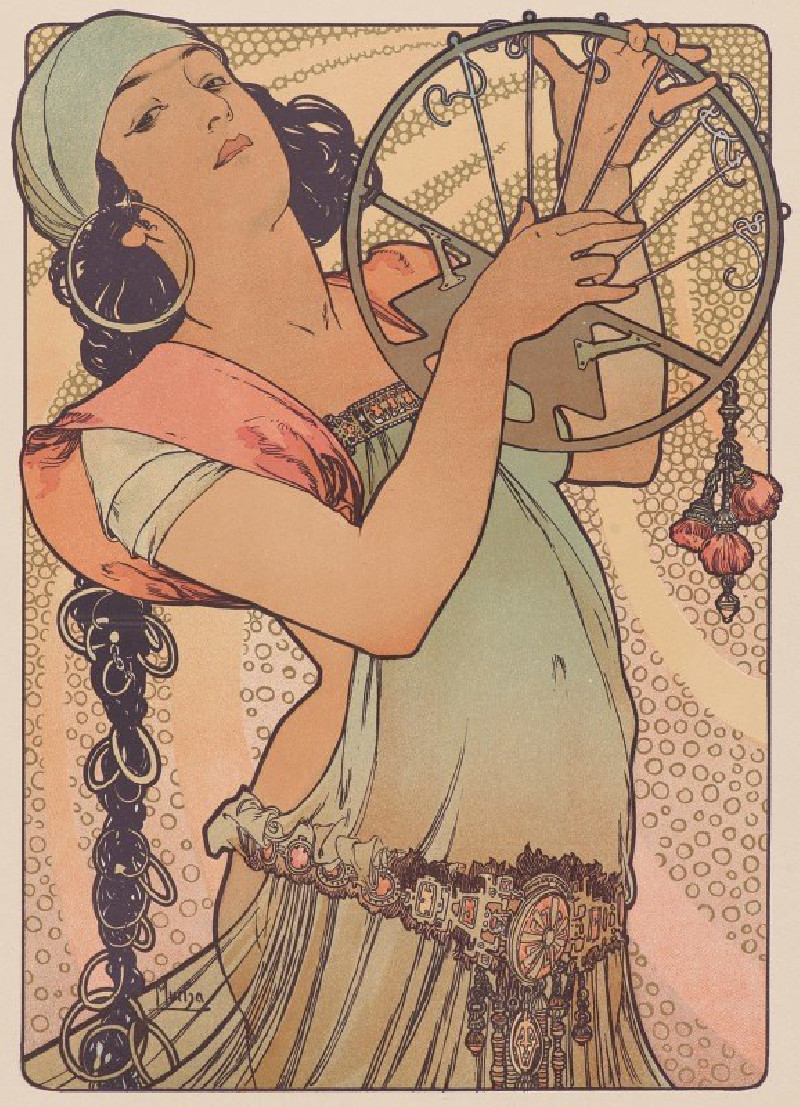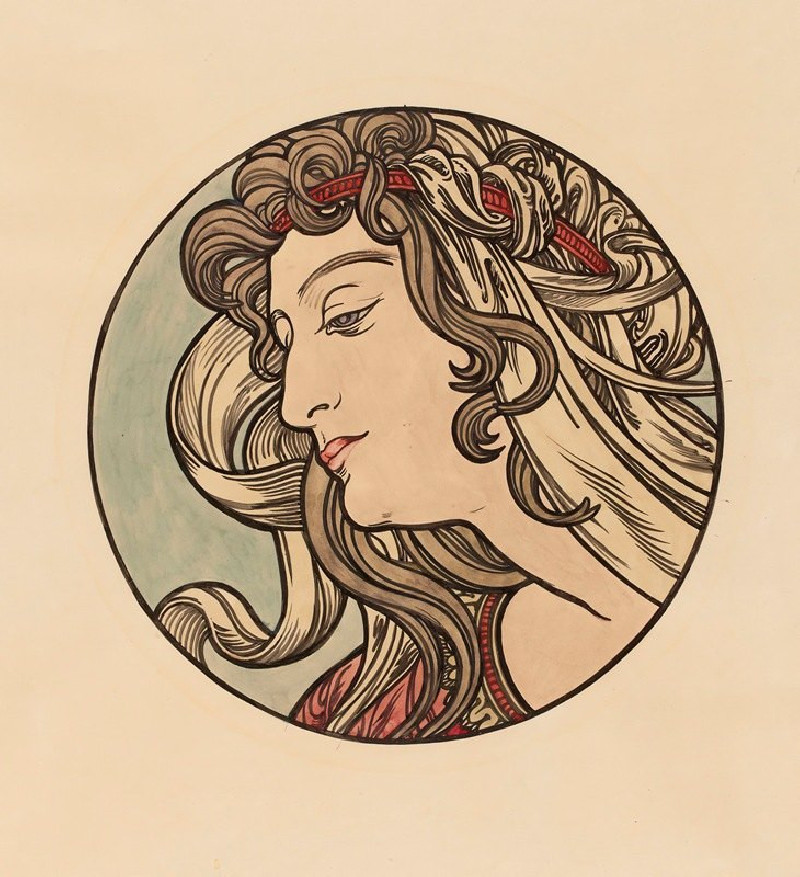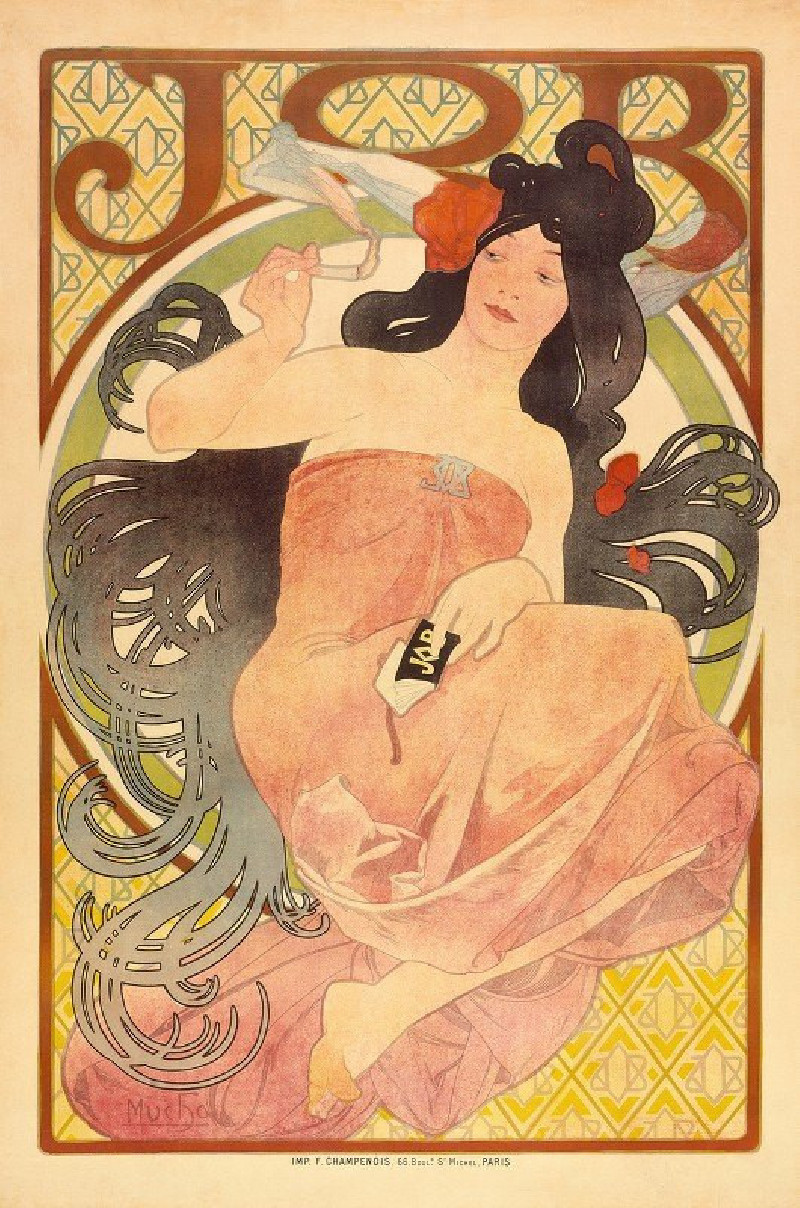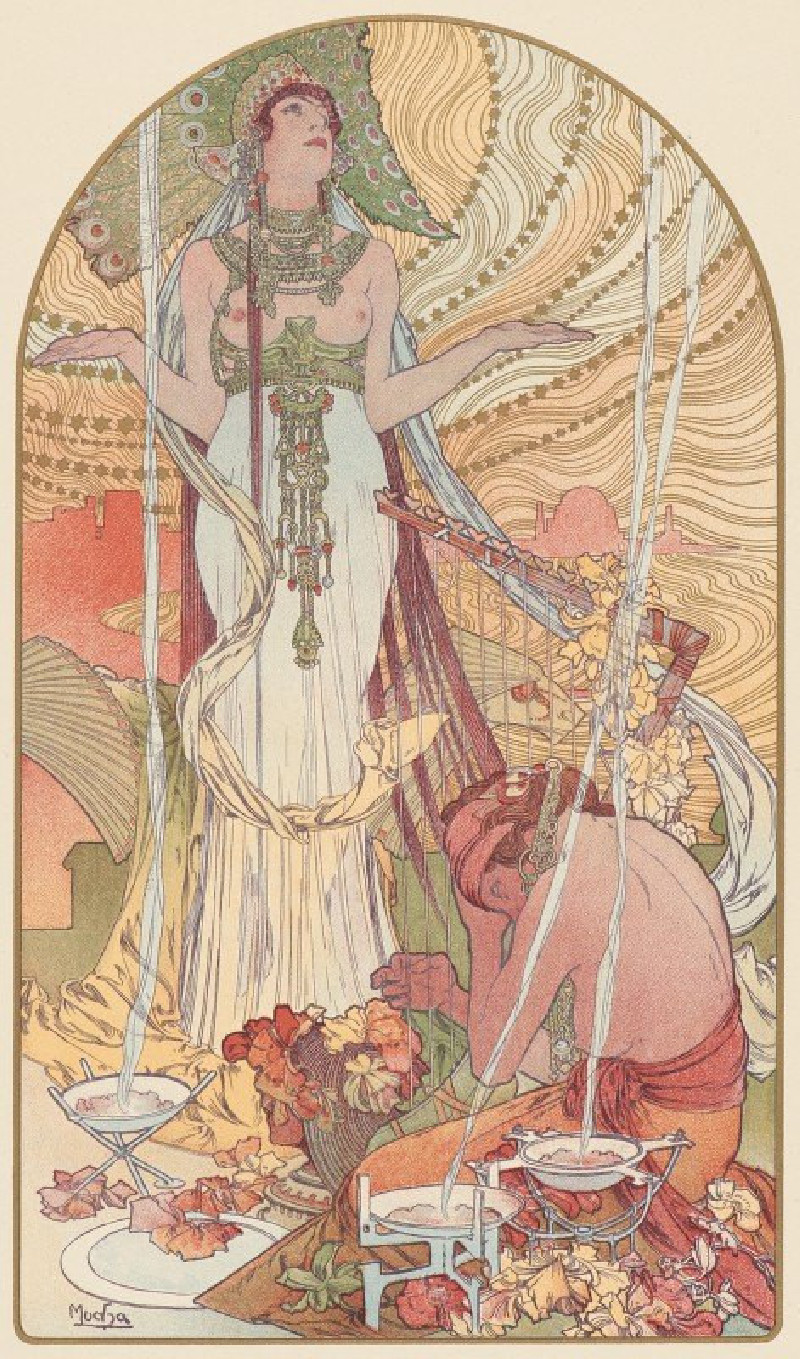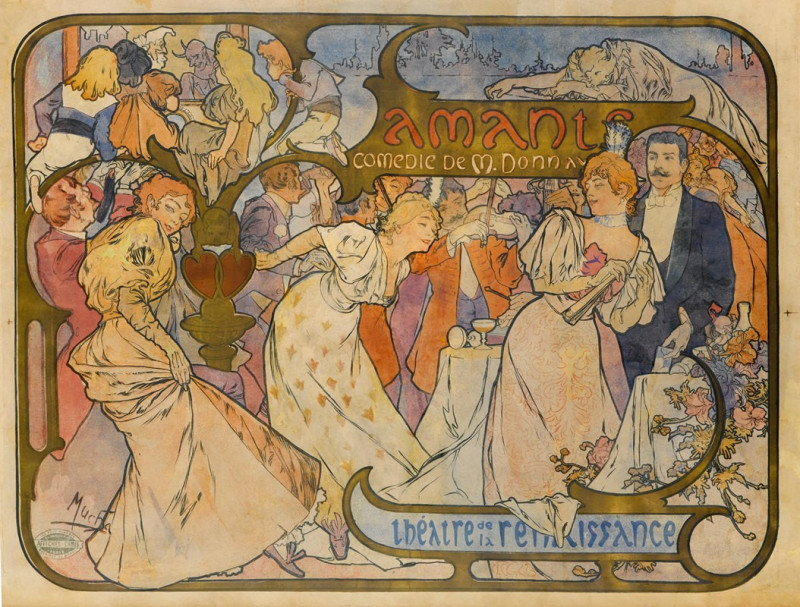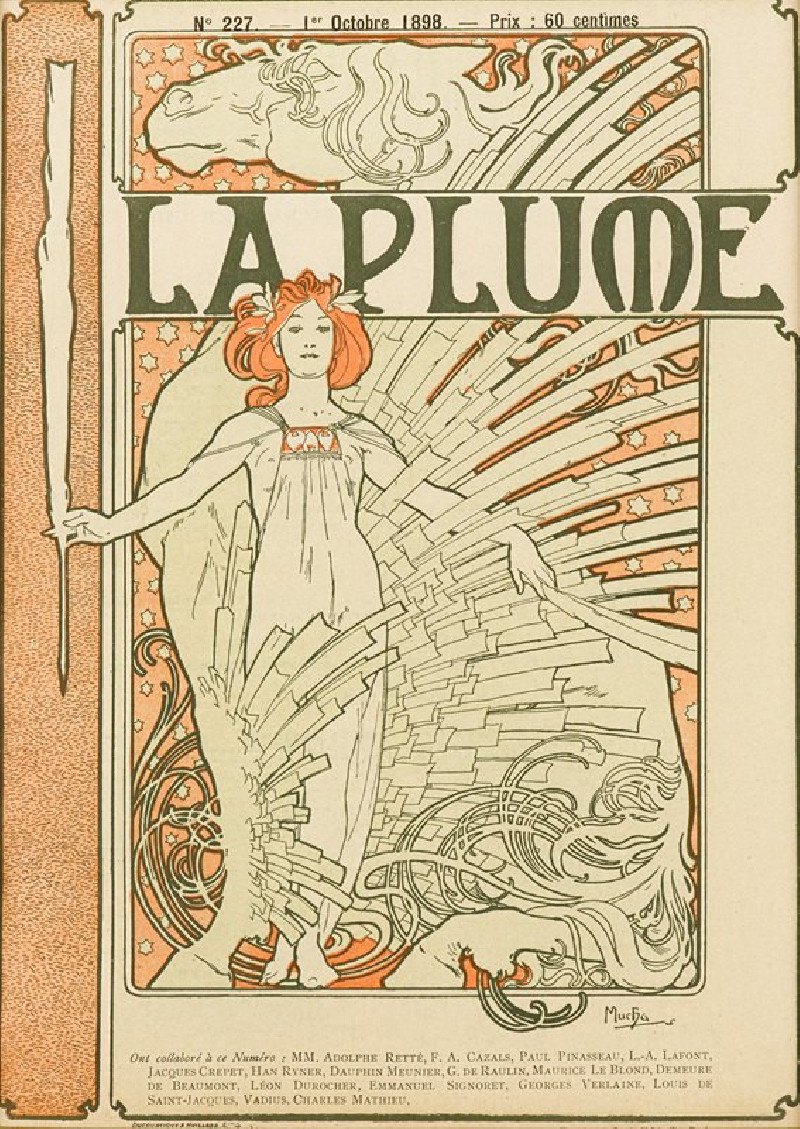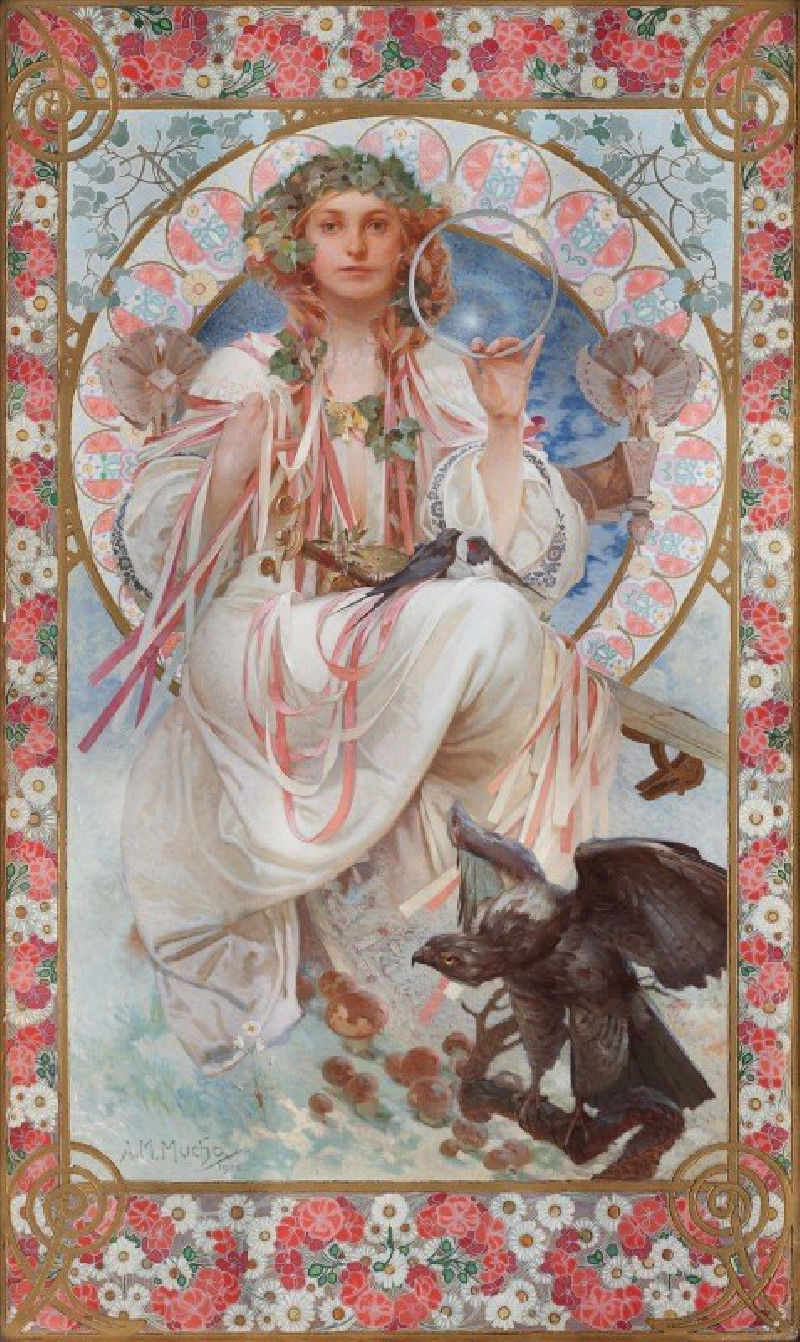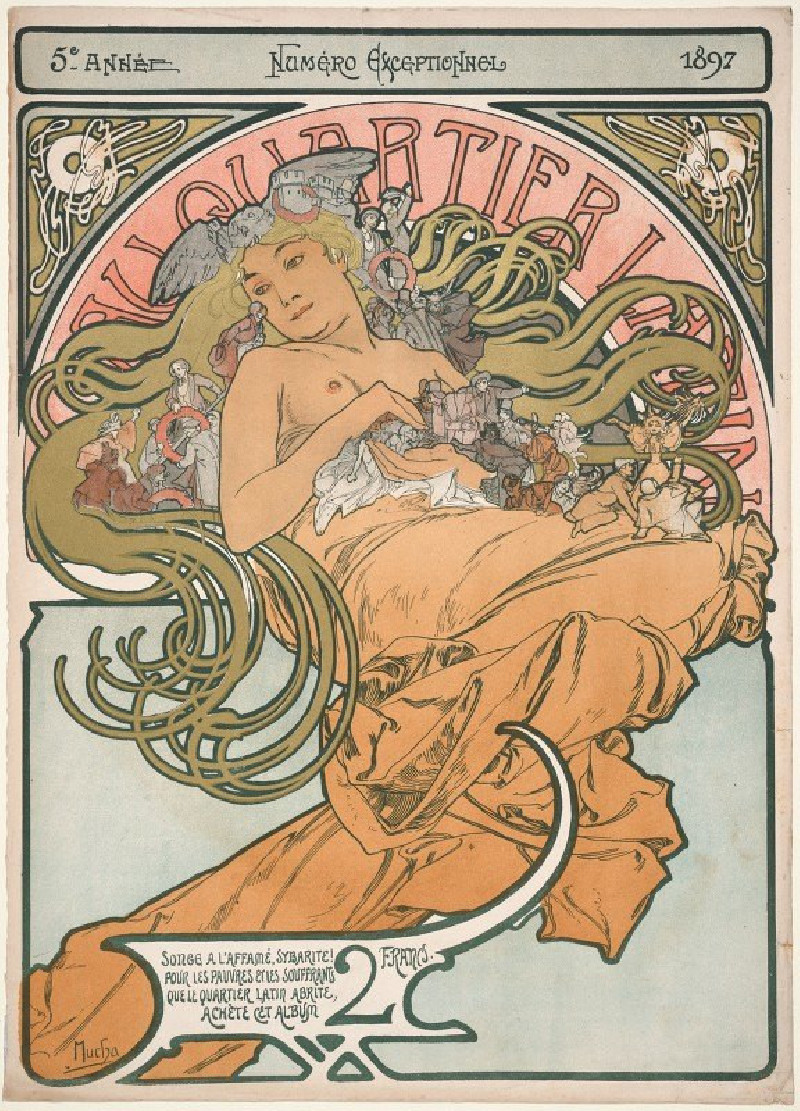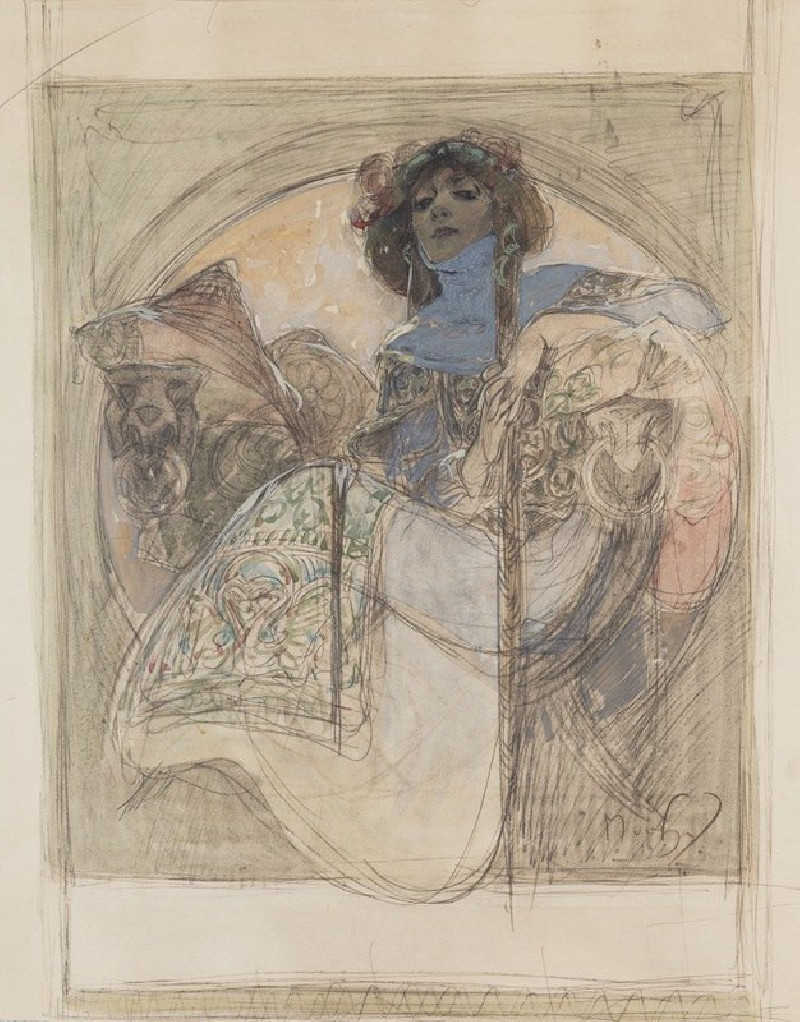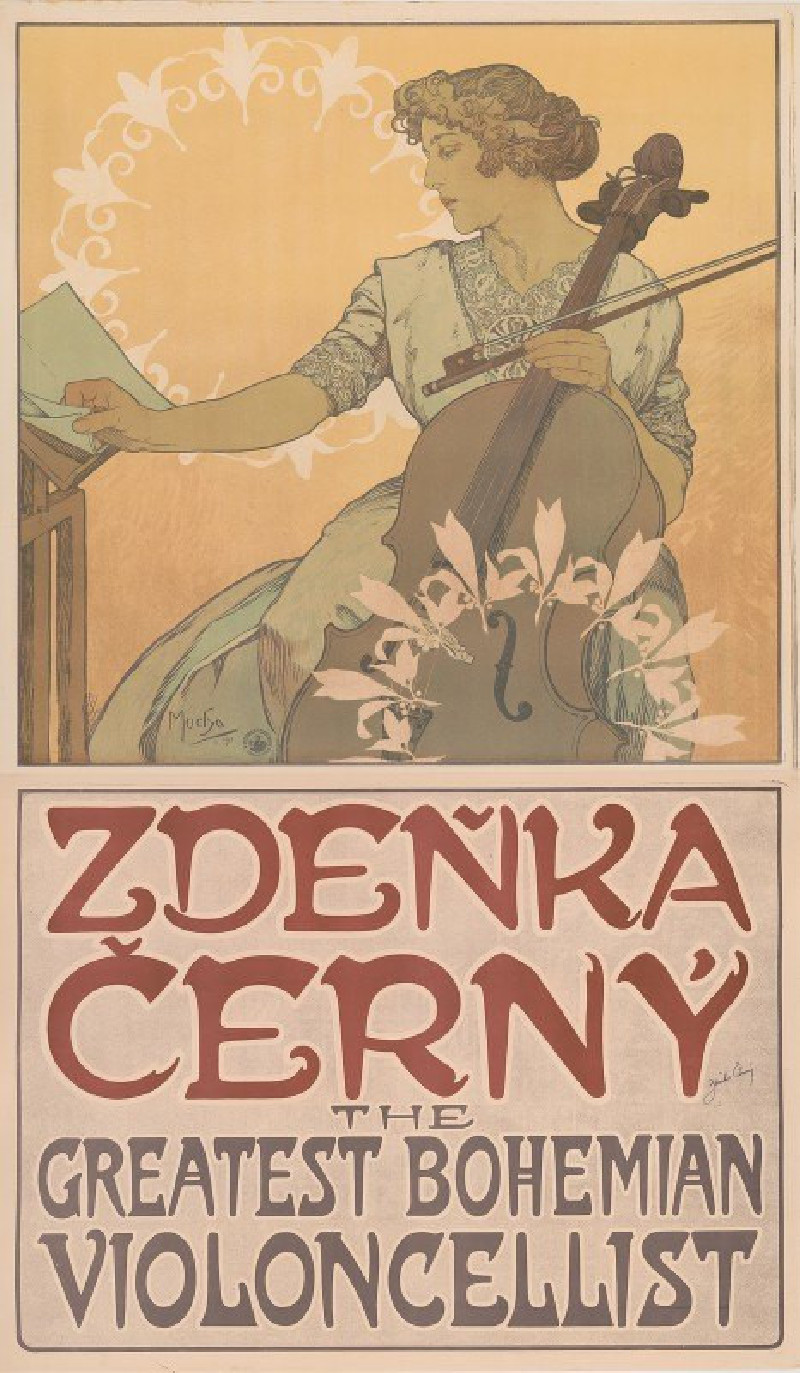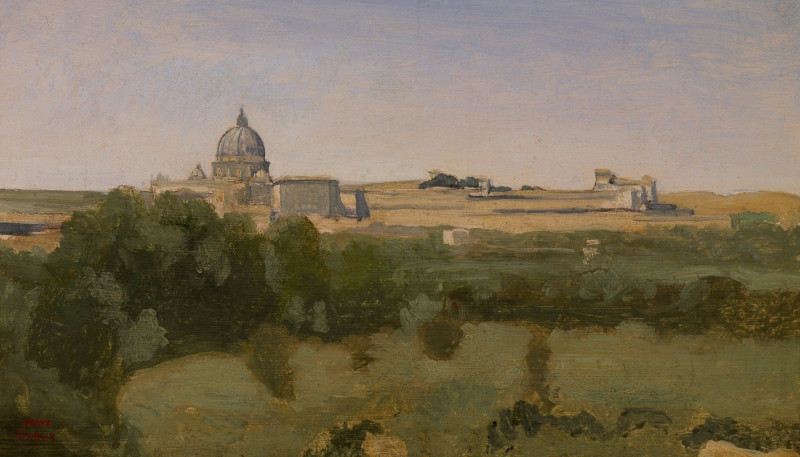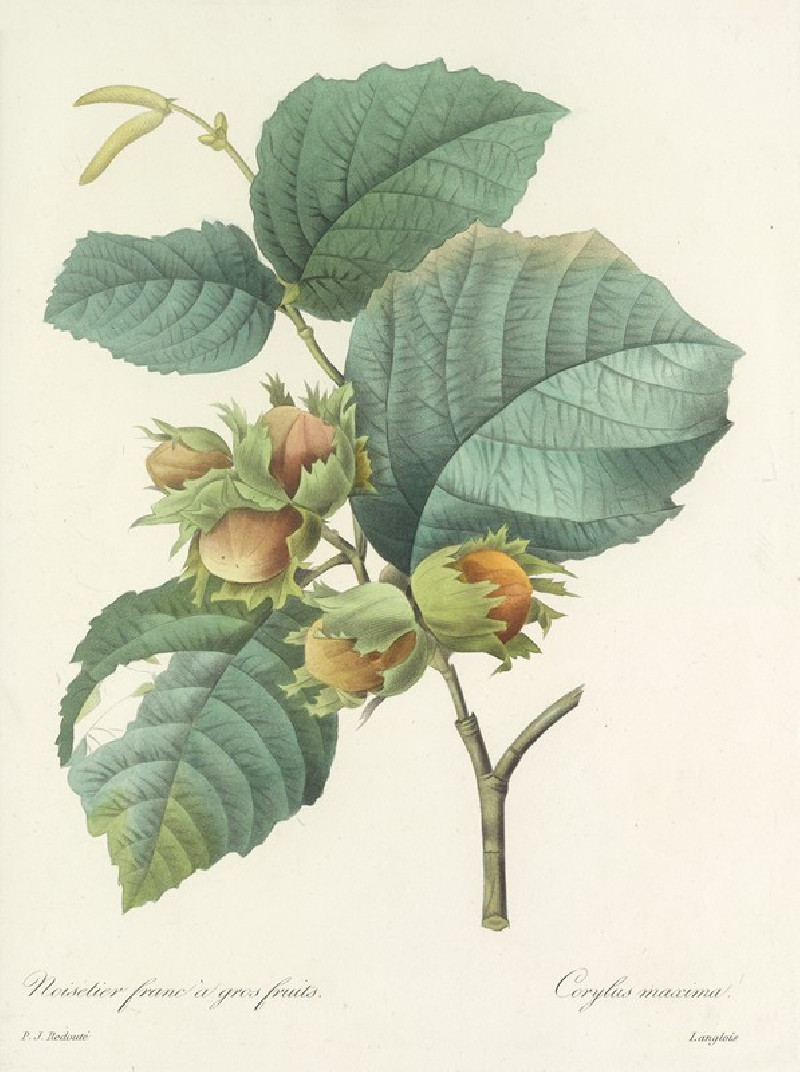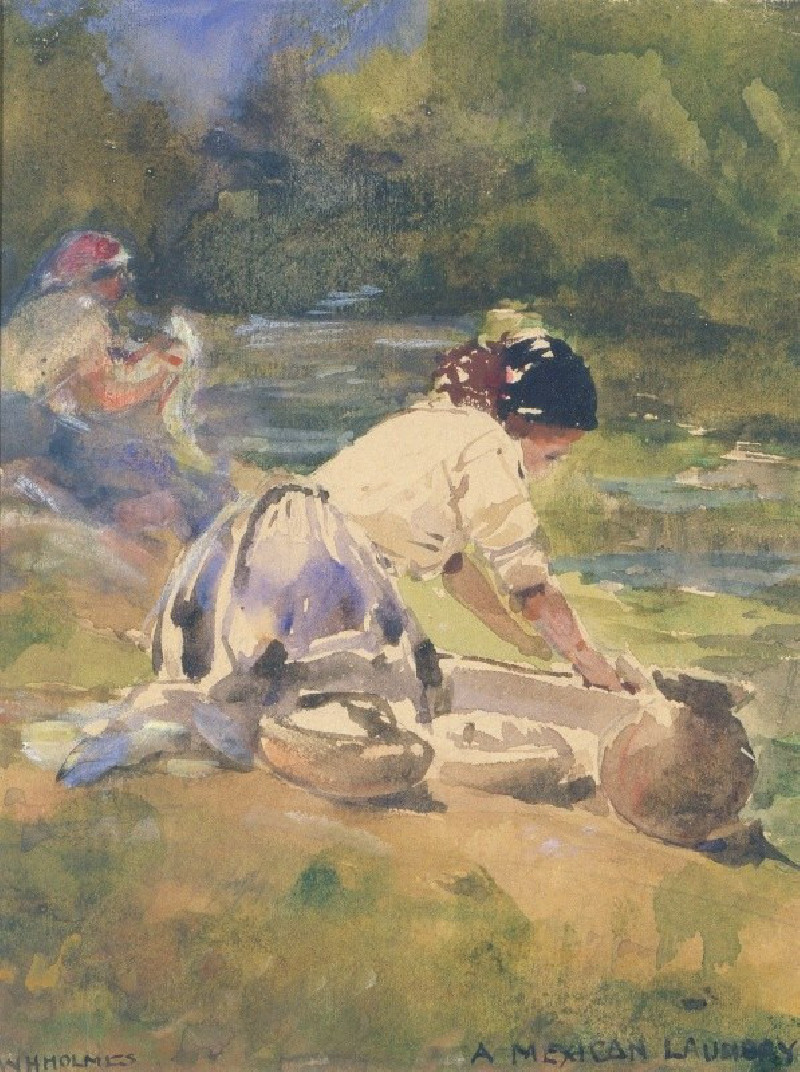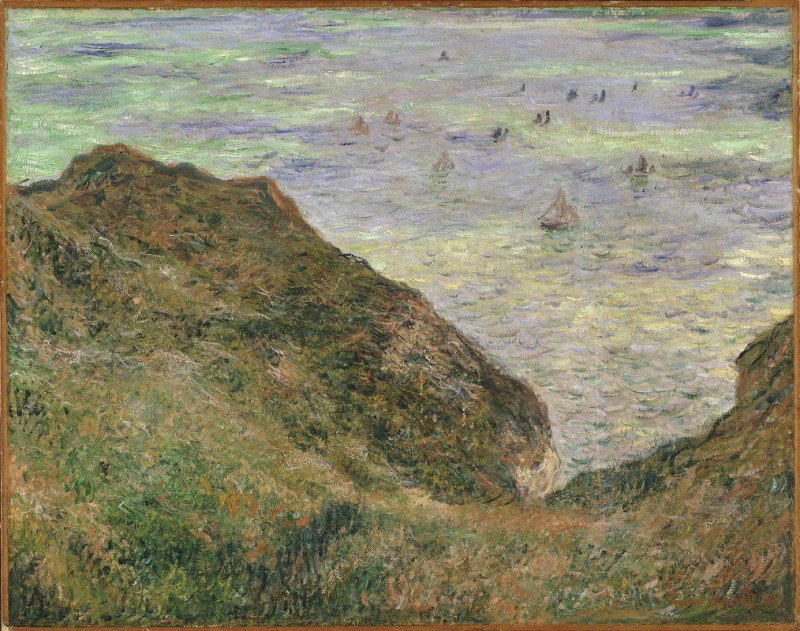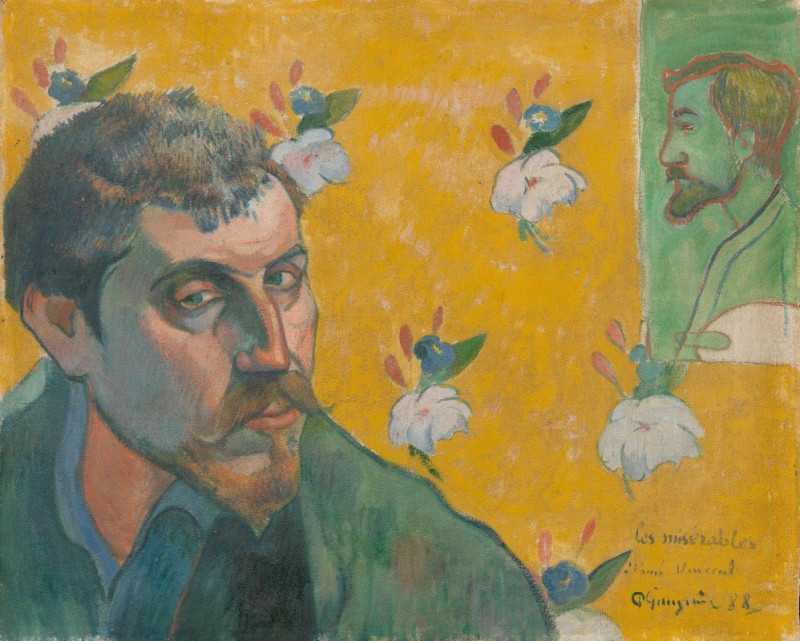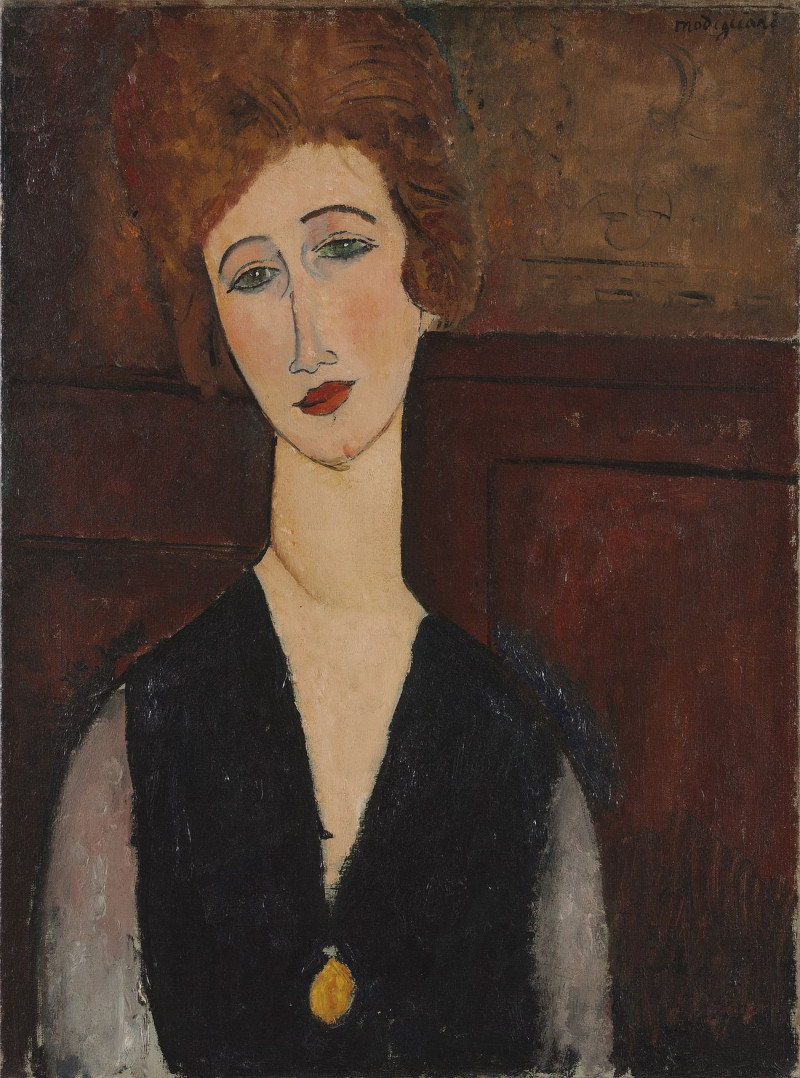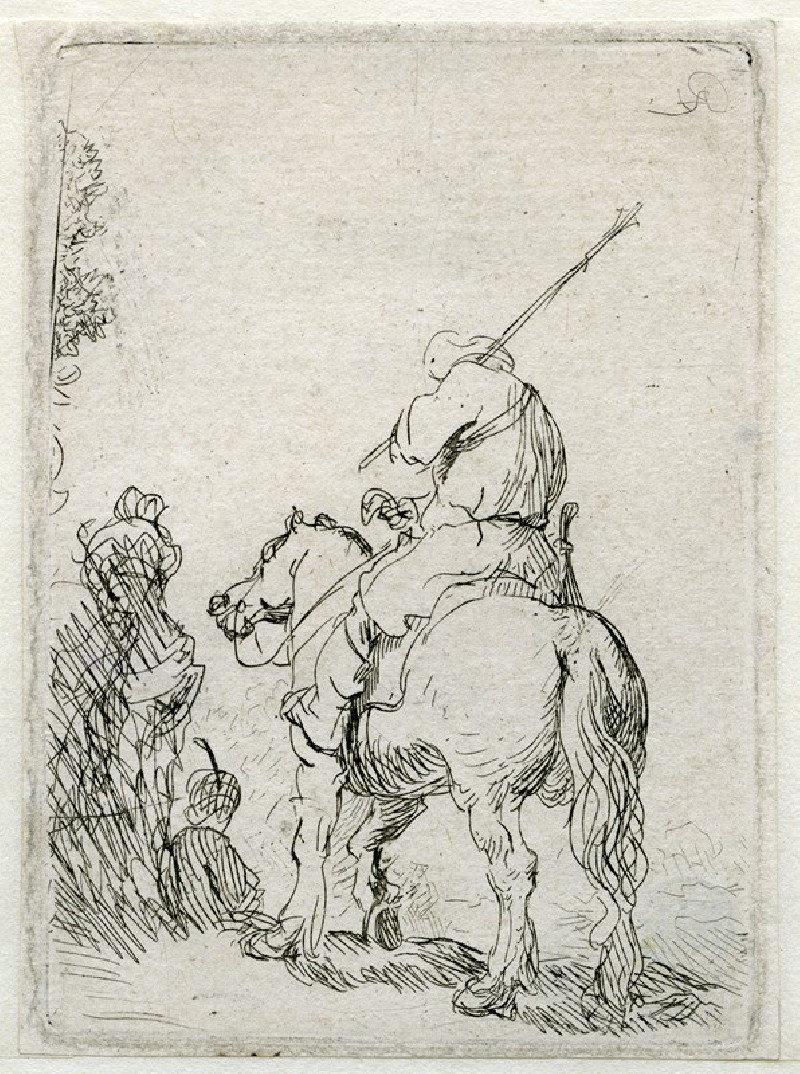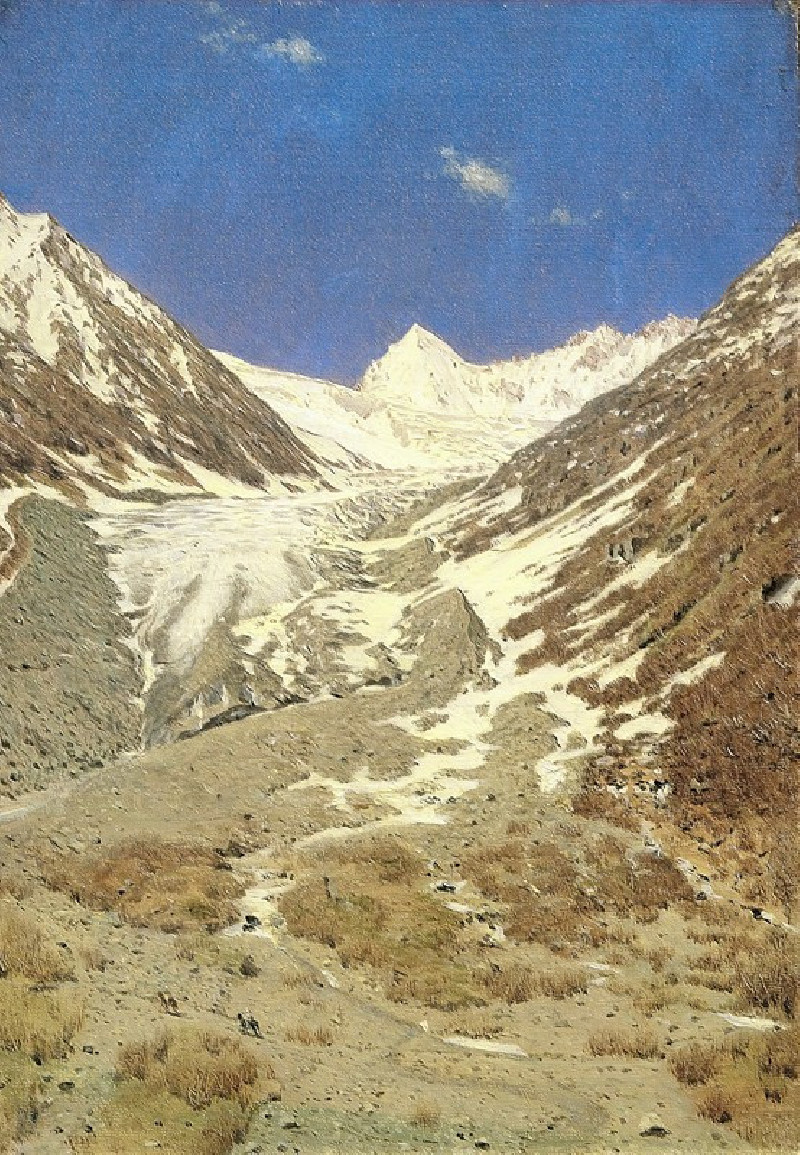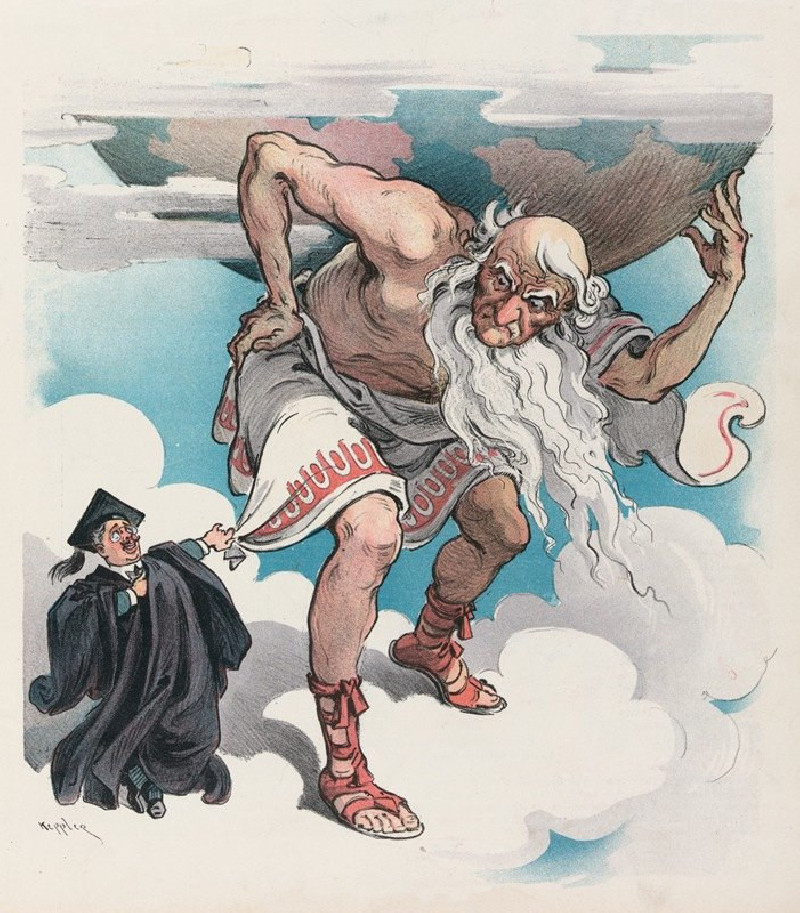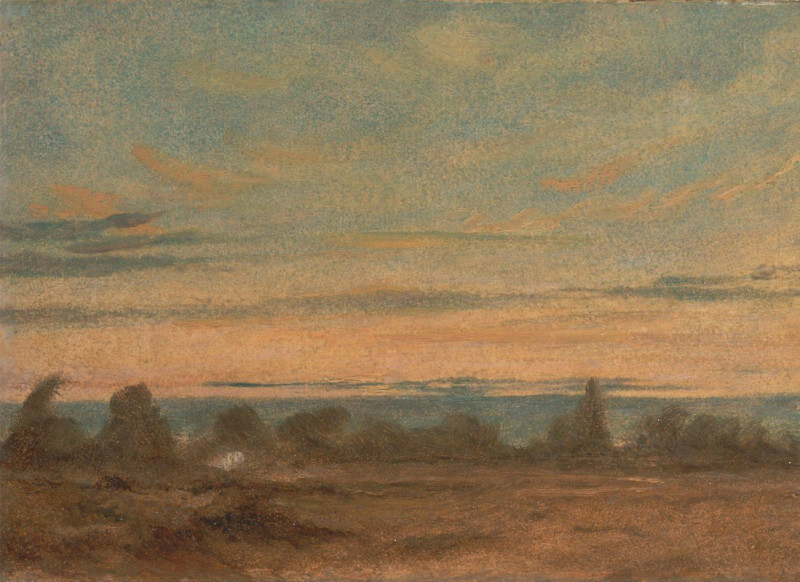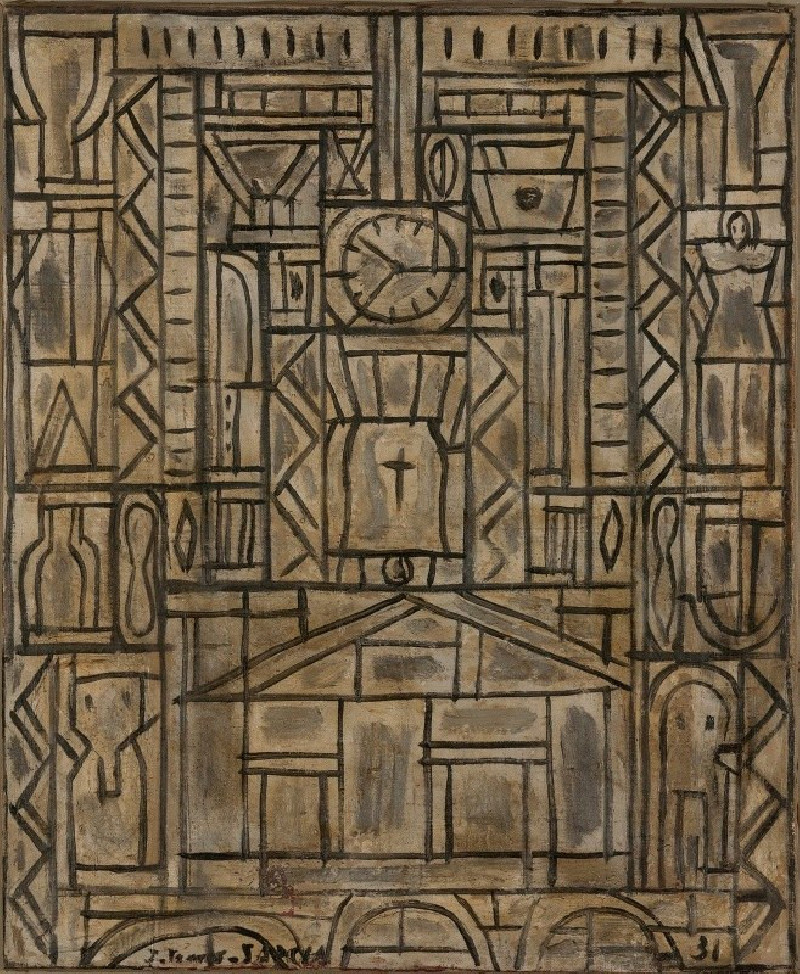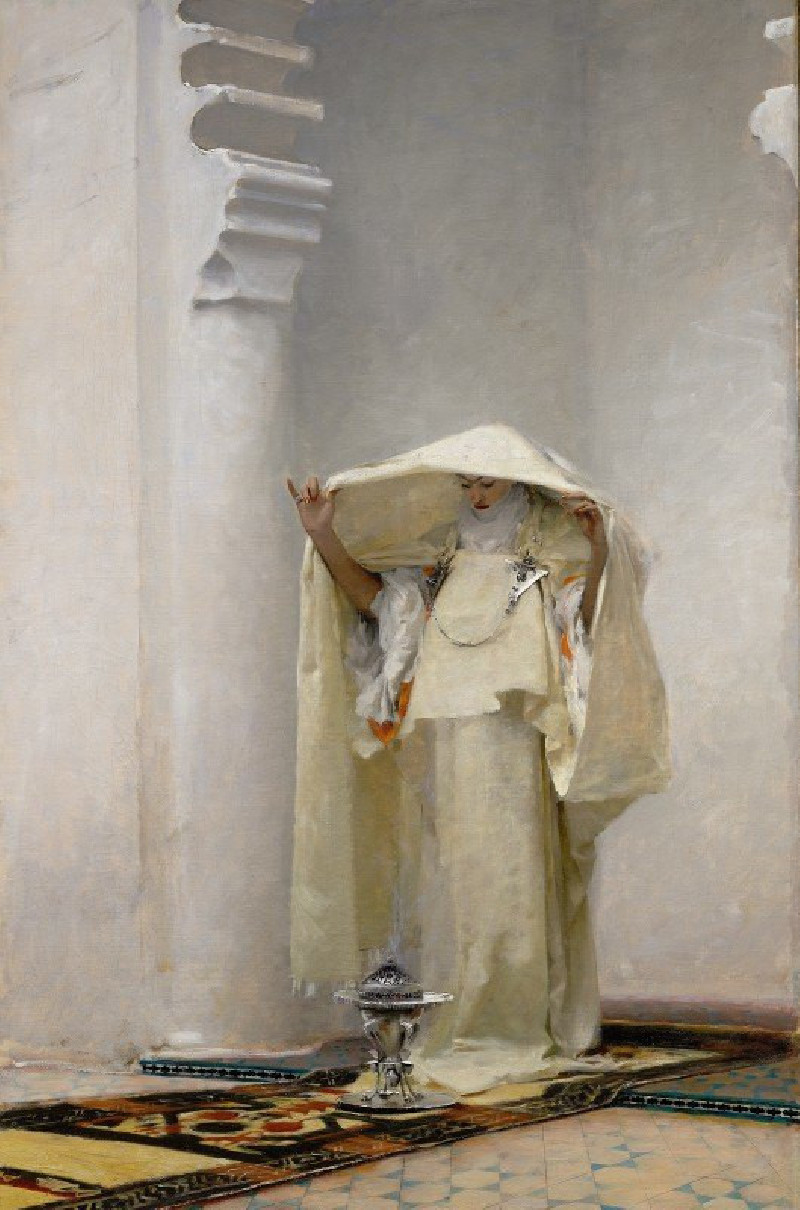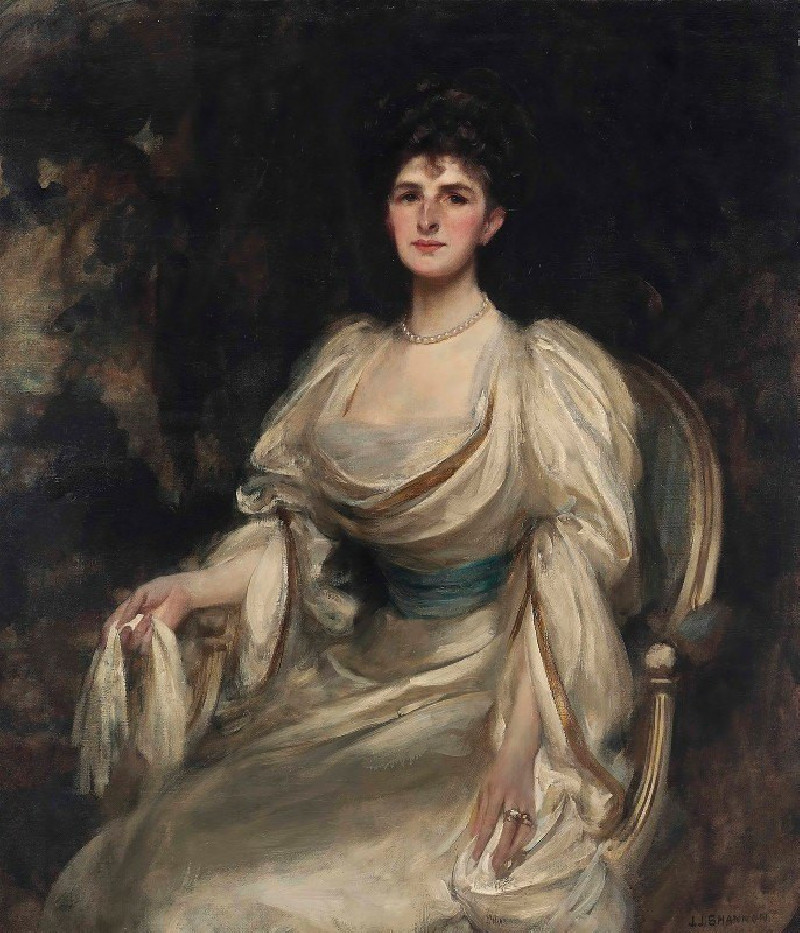Untitled (1902)
Technique: Giclée quality print
Recommended by our customers
More about this artwork
This Art Nouveau painting by Alphonse Mucha, created in 1902, is characterized by its elaborate design and symbolic use of colors and figures. The central focus of the composition is a woman who exudes a sense of elegance and vulnerability, framed by a highly decorative border typical of Mucha's style. She appears almost ethereal, with a flow of dark, wavy hair and a pale, introspective expression.To her right is an imposing figure of a monstrous bear, which may symbolize primal strength or a natural force. The bear's presence juxtaposed against the delicate figure of the woman creates a striking contrast that may evoke themes of beauty and the beast, nature versus humanity, or inner versus outer strength.The color palette used is rich yet soft, dominated by greens, purples, and oranges that give it a harmonious yet mysterious aura. The background features stylized floral and abstract patterns, which are common in Mucha's work, adding to the ornamental feel of the piece.The lower part of the painting includes a decorative panel that contains intricate, swirling motifs, further enhancing the rich visual texture and adding a sense of depth and intrigue to the piece.Overall, the painting is a compelling example of Mucha's style, combining naturalistic and mythical elements to create a visually captivating and thought-provoking work. The choice of subjects and symbols could be reflecting on the dualities and complexities of human nature, a theme often explored in Art Nouveau.
Delivery
Returns
Alphonse Maria Mucha also know internationally as Alphonse Mucha (1860-1939), was a Czech graphic artist, painter and illustrator. He lived in Paris during the Art Nouveau period, and is best know for his noticeably stylized and decorative theatrical posters like those of Sarah Bernhardt, the most famous actress in paris at the time. Mucha produced paintings, advertisements, book illustrations as well as designs for carpets, jewelry and theatre sets, in what was called the Mucha style. His works featured beautiful young women in neoclassical robes surrounded by flowers which formed as haloes.

